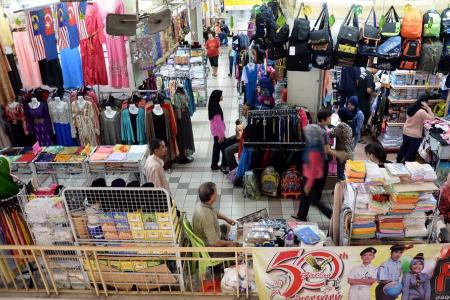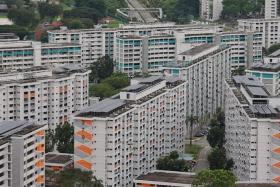What shopping in Malaysia means for us
With falling ringgit, difference in tax and prices, more S'poreans are moving their shopping to JB
Singapore's economy is facing a slowdown, with the Ministry of Trade and Industry (MTI) reporting low gross domestic product (GDP) growth.
In a recent Monetary Authority of Singapore (MAS) quarterly survey, 2017 growth forecasts were trimmed.
According to MTI, GDP growth was recorded at 0.6 per cent for July to September, lower than estimates of 1.7 per cent.
The private sector economists who took part in the MAS survey expect Singapore's GDP to grow by only 1.9 per cent, down from 2.1 per cent in the previous survey.
One potential effect of the grim forecast is that more Singaporeans will turn towards neighbour Malaysia for shopping opportunities.
What makes Malaysia attractive? One reason is the currency exchange rate that favours Singaporeans - the ringgit has almost continuously weakened against the Singapore dollar.
Another would be Singapore's goods and services tax (GST).
The Malaysian government debated the idea of introducing a similar GST but this only materialised last year when a 6 per cent GST was implemented. Until then, shoppers enjoyed a 7 per cent tax advantage when shopping there.
Prices of goods in Malaysia and Singapore also differ substantially. Non-branded items cost 20 per cent to 30 per cent less in Malaysia.
All these factors, as well as the close proximity of both countries, make it appealing for Singaporeans to go cross-border shopping in Johor Baru (JB).
BEFORE GST
To assess whether GST and price differentials affect Singaporeans' cross-border shopping patterns, we studied shopping behaviour prior to the introduction of Malaysia's GST.
Research on post-Malaysia GST shopping will be conducted in the future when sufficient data has been collected.
Our research at the National University of Singapore Business School involved several data sets. First, we studied credit card transactions from 2010 to 2012 of 24,000 individuals living close to the Singapore-Malaysia border and compared them to the spending patterns of 24,000 who live further from the border.
We ensured that both sets of individuals were comparable in income and demographics.
We found those living near the border had lower credit card spending (32 per cent less) within Singapore than those living further from the border for products that were substitutable, like supermarket purchases, apparel and dining.
In contrast, credit card expenditure on non-substitutable products like utilities, government services, medical services and education was the same.
All these factors, as well as the close proximity of both countries, make it appealing for Singaporeans to go
cross-border shopping in Johor Baru.
Next, we studied their debit card expenditures and frequency of ATM and online banking transactions. No differences between close and far consumers were observed. Our findings suggest the impact of cross-border shopping on domestic spending is concentrated on credit cards.
There were also 785 individuals who relocated from a further to a closer location to the border or vice versa during that period.
Those who moved closer to the border spent less (by 44 per cent) on substitutable products in Singapore after the move. Those who moved further away increased spending in Singapore by 12 per cent. Credit card expenses for non-substitutable products did not vary.
A second data set of 1,200 individuals with detailed information regarding their product purchases, regardless if it was paid via card or cash, was used. Again, we ensured comparability in income and demographics between individuals living near and far from the border.
Compared to individuals who live far from the border, those close by spent on a daily basis 6 per cent less on high-price items but 3 per cent more on low-price items in Singapore.
This means those living close to the border tend to purchase low-ticket items here but go to JB to buy high-ticket items due to the prices.
In particular, individuals living near the border spent less on cigarettes, especially more expensive ones, here.
A third data set involving store sales of snacks, soft drinks and detergent in Singapore was used. We categorised the stores into 27 postal areas, from which sales of stores in the three postal areas closest and furthest from the JB border were analysed.
Across all three product categories, Singapore stores in areas close to JB had lower store sales per capita, corroborating our earlier findings.
Together, the findings suggest GST and price differentials push individuals to shop across the border.
There are policy implications arising from our findings.
The 7 per cent GST encourages Singaporeans to shop in JB, causing a decrease in tax revenue for Singapore and hurting sales among small businesses close to the border.
Looking ahead, Singapore's slowing economy and the ringgit's continued drop could lead to more Singaporeans shopping in JB.
Sumit Agarwal is Visiting Professor and Qian Wenlan is Associate Professor of Finance at National University of Singapore Business School.
Disclaimer: The opinions expressed are those of the writers and do not represent the views and opinions of NUS.
Get The New Paper on your phone with the free TNP app. Download from the Apple App Store or Google Play Store now


